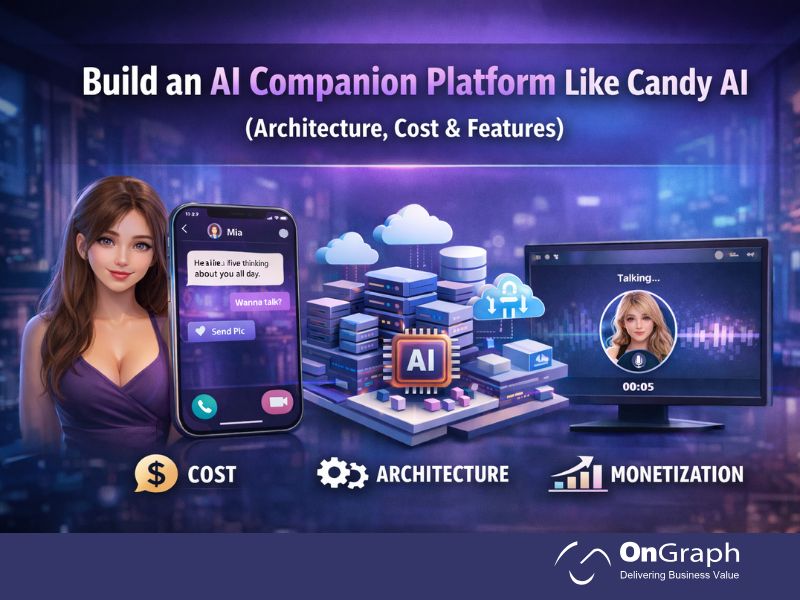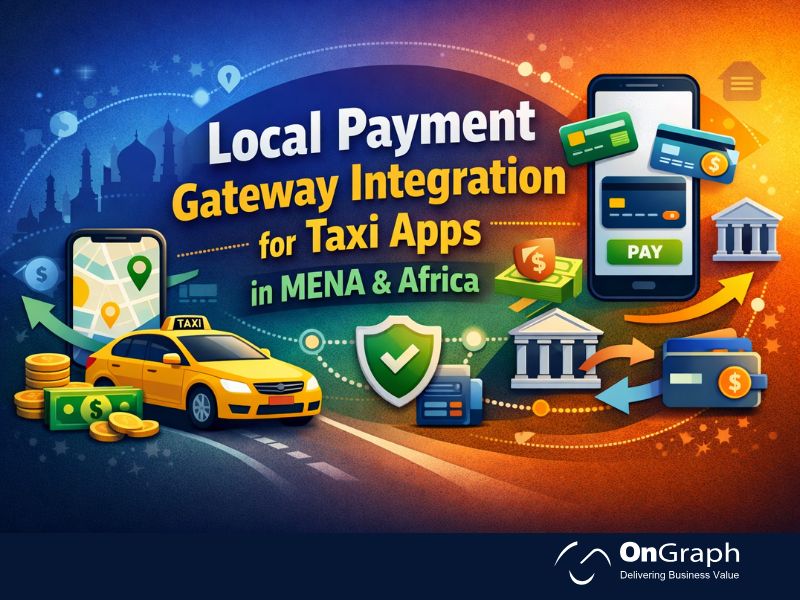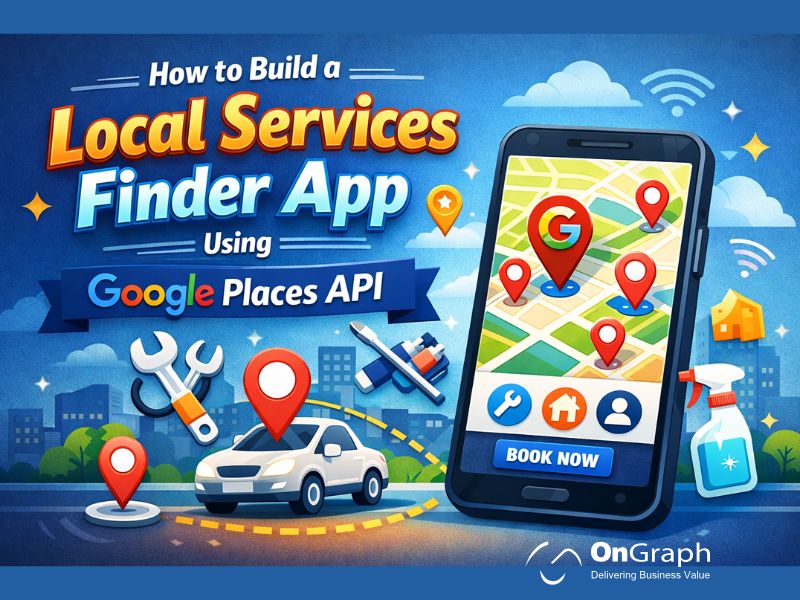In this article
- 1. In-App Navigation for Drivers
- 2. Real-Time Ride Scheduling & Pre-Booking
- 3. Dynamic Pricing & Zone-Based Surcharges
- 4. Multi-Stop & Mid-Trip Address Changes
- 5. Geofencing with City-Specific Rules
- 6. Flexible Payment Options (Card, Wallet, Stripe, Crypto)
- 7. Driver Vehicle Class Auto-Detection
- 8. Pool Rides & AI-Optimized Routing
- 9. TLC & Document Expiry Compliance
- 10. Powerful Admin Dashboard with Regional Customization
- Bonus: What to Expect in 2025 and Beyond
- Conclusion
The ride-hailing industry continues to evolve rapidly, and taxi apps are no longer just about getting from point A to B. Today’s users expect a seamless, smart, and safe experience. For entrepreneurs and mobility businesses exploring taxi app development in 2025, staying ahead means offering modern taxi app features that match—and exceed—what giants like Uber and Lyft provide.
Whether you’re planning to build for a local fleet, a cooperative, or a multi-city ride-sharing service, including advanced and scalable features is key to attracting users and retaining drivers.
In this article, we’ll cover the top 10 Modern Taxi App Features you must include to compete in 2025—and provide insights, stats, and real-world examples that prove their value.
1. In-App Navigation for Drivers
Gone are the days when drivers had to switch between apps to navigate. In-app navigation for drivers integrates real-time turn-by-turn directions directly inside the app—eliminating app switching and reducing missed turns or late arrivals.
Why It Matters:
- Boosts efficiency and driver confidence
- Provides seamless UX
- Prevents distractions and delays
Case Study: A New York-based fleet cooperative improved ride completion rates by 22% after embedding native navigation via Google Maps SDK within their custom app.
2. Real-Time Ride Scheduling & Pre-Booking
Modern users appreciate flexibility. Offering both instant rides and future-scheduled rides ensures your app accommodates working professionals, airport travelers, and corporates alike.
Key Capabilities:
- Book now / Ride later toggle
- Schedule trip automation engine
- Driver allocation based on availability
According to Statista, 42% of users prefer to pre-book rides, especially in metro cities and airports.
3. Dynamic Pricing & Zone-Based Surcharges
Different areas, times, and special events can drastically affect demand. Your taxi dispatch system must include flexible pricing logic based on:
- Geofencing (e.g., airports, downtowns)
- Time of day or surge hours
- Event-specific locations
Example: In NYC, airports charge an extra $2.75 pickup fee. By applying dynamic pricing with geo-boundaries, OnGraph-enabled apps allow such surcharges to be automatically added.
4. Multi-Stop & Mid-Trip Address Changes
Today’s passengers don’t always travel one way. Providing multi-stop booking and the ability to change destinations mid-trip is essential.
Modern Taxi App Features:
- Add or remove stops
- Change drop-off during an active ride
- Recalculate fare instantly
Pro Tip: Limit address changes to a certain time window (e.g., within first 5 mins of ride) to avoid misuse and reduce driver disputes.
5. Geofencing with City-Specific Rules
Every city has its own taxi regulations and tax structures. Your app should support region-based rules through geofencing and conditional configurations.
Example Configurations:
- Apply NYC Black Car Fund automatically
- Chicago-specific tax logic
- Restrict service zones per fleet
Use Case: OnGraph’s custom taxi app development allowed a cooperative in the U.S. to auto-apply TLC tax rules using polygon-based geofencing.
6. Flexible Payment Options (Card, Wallet, Stripe, Crypto)
Offering diverse payment methods is a must. Modern users expect to pay using:
- Credit/debit cards
- Digital wallets
- Stripe, Razorpay, Apple Pay
- (Optional) Crypto like USDT or Bitcoin
Insight: Stripe is the preferred choice for taxi booking app development due to global reach, robust APIs, and driver payout support.
Security Tip: Use tokenized card storage to ensure PCI compliance and fraud prevention.
7. Driver Vehicle Class Auto-Detection
Rather than letting drivers choose their ride category (Sedan, SUV, Premium), the app can auto-classify them based on:
- Car make & model
- License plate
- Year of registration
This eliminates category misuse and ensures fair pricing.
Bonus: Integrate with government databases or use vehicle recognition APIs for auto-matching.
8. Pool Rides & AI-Optimized Routing
Want to build a ride-sharing app that optimizes fleet usage? Ride-pooling is essential. AI-based logic assigns passengers to drivers with overlapping routes.
Benefits:
- Maximizes revenue per ride
- Offers cheaper fares to users
- Reduces carbon footprint
Advanced Feature: AI route optimizers (e.g., OR-Tools) can dynamically assign 3–4 passengers per route with minimal detour.
9. TLC & Document Expiry Compliance
If you’re launching in regulated markets like NYC, ensure your app verifies drivers against regulatory lists (like TLC) and alerts for document expirations.
Must-Have Features:
- Daily verification against open APIs (TLC, DMV, etc.)
- Document expiry reminders
- Automatic suspension on expiry
OnGraph’s taxi application development includes automated TLC database checks and SMS/email alerts for upcoming document expiries.
10. Powerful Admin Dashboard with Regional Customization
Your success depends not just on the rider/driver apps, but also on how much control your backend admin gets.
Key Capabilities:
- Region-specific pricing and rules
- Add/remove services, driver car categories
- View real-time driver locations and ride history
- Manage coupons, taxes, and surcharges
Example: With OnGraph’s dashboard, an operator in Kenya manages three cities with unique pricing, supported vehicles, and payout logic—all from one backend.
Bonus: What to Expect in 2025 and Beyond
As technology advances, future taxi apps will likely include:
- Voice AI chat support
- EV-compatible routing
- Subscription models for frequent riders
- Hyper-localized marketing automation
According to Allied Market Research, the global ride-hailing market is projected to reach $230 billion by 2028, driven by innovation and localization.
Also read- How to Launch a Successful Taxi App in Kenya: Costs & Features
Conclusion
The ride-hailing landscape is evolving faster than ever. If you’re planning to create a taxi app in 2025, your focus must go beyond basic booking and payments. Building a scalable and customizable product with advanced features is critical to staying ahead in the competitive market.
At OnGraph, we specialize in taxi mobile app development, offering both ready-made white-label solutions and tailor-made taxi app development based on your business logic, region, and growth goals.
Whether you’re a local operator, a fleet owner, or a startup, our team helps you deploy faster with flexibility, reliability, and complete ownership.
About the Author
Let’s Create Something Great Together!
Latest Blog
















